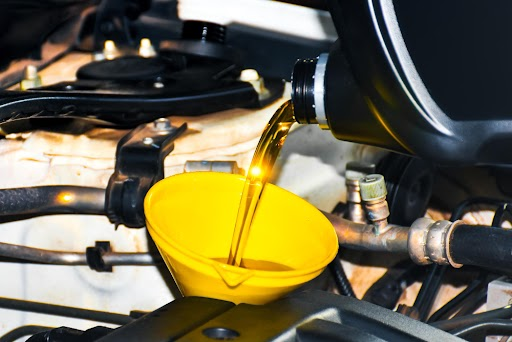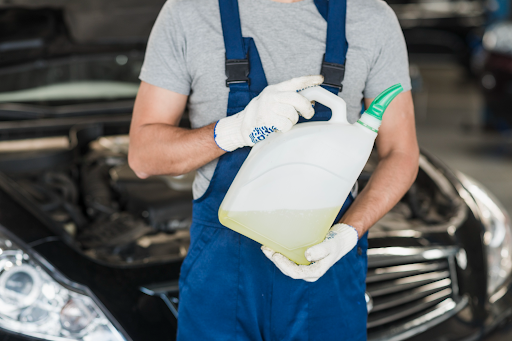Choosing the right engine oil is essential for keeping commercial vehicles in good condition. Whether your fleet runs on highways or operates under heavy-duty conditions, engine oil plays a crucial role in performance and long-term reliability. Many vehicle owners and maintenance professionals rely on trusted brands like Tata Genuine Engine Oil to avoid issues and reduce downtime.
But how can you tell if the oil you’re using is of good quality? It’s not just about colour or price. Here are some key steps you can follow to check the quality of engine oil before using it in commercial engines.
1. Check for API or ACEA Certifications
Engine oils are tested and certified by international bodies like API (American Petroleum Institute) and ACEA (European Automobile Manufacturers’ Association). These certifications are not just symbols; they represent quality and performance standards.
Look for the API rating such as:
- API CI-4 or CJ-4 for diesel commercial engines
- ACEA E4 or E6 for higher protection and longer drain intervals
If the oil container doesn’t show these, it may not be suitable for commercial use. Most reputed brands like Tata Genuine Oil carry these marks to ensure trust and performance.
2. Look at the Viscosity Grade
The viscosity grade defines how thick or thin the oil is at different temperatures. For commercial vehicles working in various climates and load conditions, choosing the right viscosity is crucial.
You will see grades like:
- 15W-40
- 10W-30
- 20W-50
Key things to keep in mind:
- Lower “W” numbers work better in cold regions
- Higher second numbers protect in extreme heat
- Always check your engine’s recommended grade
Using the wrong viscosity can affect fuel efficiency and engine wear. A good-quality oil will always mention its grade clearly on the label.
3. Check for Clean Appearance and Consistency
You don’t need a lab to spot bad oil. A quick look can tell a lot. Here’s what to observe when inspecting engine oil:
- Colour – Fresh engine oil is amber or golden
- Smell – Should not have a burnt or sour smell
- Consistency – Should feel smooth between your fingers
If it looks dark, feels gritty, or smells strange, avoid using it. Engine oil should always be free from dirt and impurities before being poured into your engine.
4. Read the Packaging Carefully
The container can reveal a lot about the oil’s quality. Authentic engine oils from original manufacturers use proper packaging, sealed caps, and printed batch numbers.
Look for:
- Branding and quality marks
- Leak-free, tamper-proof packaging
- Clear expiry and manufacturing dates
- Batch number and label printing
Fake oils often come in mismatched containers. Trusted oils like Tata Genuine Engine Oil in India maintain consistent packaging and label information across batches.
5. Consider the Drain Interval
Different oils are designed for different service intervals. High-quality oil will last longer before needing replacement.
Look for details like:
- Drain interval in kilometres
- Compatibility with long-drain commercial engines
- Load-bearing and heat-resistant performance
Long-drain oils reduce frequent servicing, which is beneficial in fleet operations. However, quality should still be checked regularly.
6. Feel the Oil After Usage
Used oil can reveal how well it performed during its service cycle. If the oil still looks and feels stable, it’s a sign of good quality.
When inspecting used oil:
- Some darkening is normal
- Should not be watery or full of clumps
- Should retain a slightly sticky feel
- No foul or burnt smell
If the oil breaks down too early, it may be due to a low-quality formulation.
7. Ask for Manufacturer Recommendations
Every engine has its own lubrication needs. Always follow the specific engine requirements for oil type and brand.
Steps to follow:
- Refer to the commercial vehicle service manual
- Check for oil listings by engine model
- Avoid general-purpose oils
- Use only recommended grades and specifications
Technicians rely on accurate oil listings to ensure long engine life and consistent performance.
8. Beware of Fake or Low-Grade Oils
Counterfeit engine oils are a growing concern. They may be cheaper, but often contain harmful or diluted substances.
Look out for:
- Missing safety seals or holograms
- Poor label printing
- Odd smells or colours
- Unusually low pricing
- No brand support details
Buying from authorised sellers and choosing trusted products like Tata Motors Genuine Oil helps avoid damage caused by fake lubricants.
9. Check for Engine Performance After Oil Change
Performance feedback after an oil change is a practical way to judge oil quality. Good engine oil should result in better running and fewer issues.
Watch for improvements like:
- Smoother engine sound
- Less smoke or exhaust smell
- Stable performance under load
- Better cold start-up
If there’s no improvement or conditions worsen, it may signal the use of wrong or low-quality oil.
Keeping Machines Running Strong and Clean
Commercial engines demand consistency, cleanliness, and strength. Poor engine oil can lead to unwanted breakdowns and higher maintenance costs. The good news is, checking oil quality isn’t complicated. By following these simple steps, fleet owners and technicians can protect their engines and improve performance over time.
Many professionals continue to trust Tata Motors Genuine Oil to keep their engines safe, efficient, and ready for the road.






